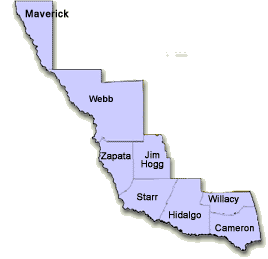|
| Home | | About Us | | Water Planning | |
Groundwater | |
Conservation | |
Environmental Flows | |
Drought Mgmt. | |
Resources | |
Search | | ||
|
Region M - Rio Grande
2001 Regional Water Plan Overview  Basic Plan Facts
What's at Issue?
Water issues in this region are extremely complicated. The region's main source of water, the Rio Grande River, is over appropriated Ñ meaning that there is more water promised through permits than there is actual water available. This region also shares this main source of water, and an international border, with Mexico.The Region M plan is a good example of taking water conservation seriously. In the initial drafts of the 2001 regional plan, all the future needs of the region were met through measures such as conservation, acquisition (and conversion to municipal use) of agricultural rights to the Rio Grande, the use of reclaimed wastewater, and further development of groundwater sources. Unfortunately, the final plan included the Brownsville Weir as a proposed strategy. This project will limit the freshwater inflows from the Rio Grande into the Gulf, will restrict upstream movement of fish, and most importantly is not needed to meet projected demands. Action Items
Here are some of the items the Region M Planning Group must address.For conservation and drought management, the plan needs to...
To secure the protection of flows for fish and wildlife, the plan needs to...
To ensure that only the most economically sound water supply strategies are implemented, the plan needs to...
Additional Resources
Analysis
The National Wildlife Federation analyzed the initially prepared plan using their Principles for an Environmentally Sound Regional Water Plan. Please contact us for more information about this analysis.
|
||||||||||||


 Region M
Region M